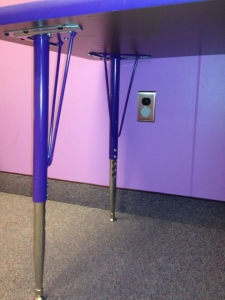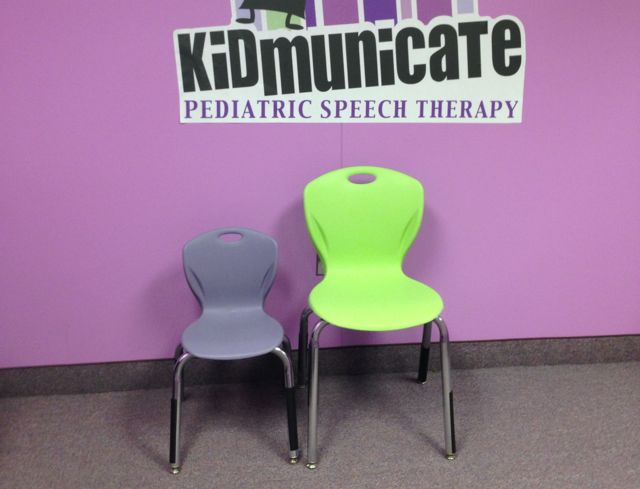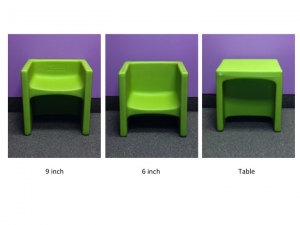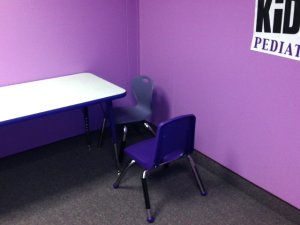Which chair works best for pediatric speech therapy, the small chair or the large chair?
If your child does speech therapy in your home or you are working at home with your kid on therapy techniques recommended by the therapist, then you might be interested in using furniture that will optimize the results.
So, the answer to the question above is…..it depends.
Children come in all shapes and sizes, so the size of the furniture needed to ensure proper positioning for pediatric speech therapy (and feeding therapy) is determined by the size of the child. That’s why you will find furniture that is adjustable and multiple size chairs in pediatric speech and language pathology clinics.
 At Kidmunicate, we use the 90-90-90 rule to determine which size chair to use in a therapy session. Ankles, hips and knees should all be at a 90 degree angle and both feet should be on the ground for balance and the appropriate sitting posture. We also adjust the height of the table to allow the elbows to rest naturally. Kids often to put their elbows on the table during therapy, so if the table is too low the child will be slumped forward.
At Kidmunicate, we use the 90-90-90 rule to determine which size chair to use in a therapy session. Ankles, hips and knees should all be at a 90 degree angle and both feet should be on the ground for balance and the appropriate sitting posture. We also adjust the height of the table to allow the elbows to rest naturally. Kids often to put their elbows on the table during therapy, so if the table is too low the child will be slumped forward.
Why is this important? It’s important because each part of the body influences other body parts. We want the neck and jaw to be in the optimal position for speech and feeding therapy. The 90-90-90 rule allows this to happen.
It is also important for the child to pay attention and focus on the therapy. To achieve this goal, it’s sometimes necessary to restrict the movement of a squirmy child. For kids who are overly active and easily distracted, I recommend two options.
Cube chairs
We use kid-friendly Cube chairs for proper positioning. The Cube chairs that we use at Kidmunicate uses have two seating heights. We adjust the height of the Cube chair, either 6 inches or 9 inches, by simply flipping the chair over. This allows us to achieve the ideal 90-90-90 position while the raised sides of the chair restrict movement.
Using the corner of the room for proper positioning
After I adjust the height of the table, I place it up against the wall near the corner and place the chair in the corner. Once the kid is sitting comfortably in the chair, I position my “kid sized” chair next to the kid in a non-threatening way to box the kid. I use a kid size chair because it’s important to be on the same eye level as the child during therapy. Note: some therapists opt to use a table with a cut out. The therapist will put the child in a chair against a wall, then push the table up against the wall to encompass the kid inside the cut out.
The Kidmuncation Point
Proper posture and positioning are important for speech–language and feeding therapy. If you or your speech pathologist are working with your child at your home think about selecting and setting up the furniture to puts your child in the best position for a successful therapy session. If you take your child to a clinic, make sure that that clinic is set up for success.



